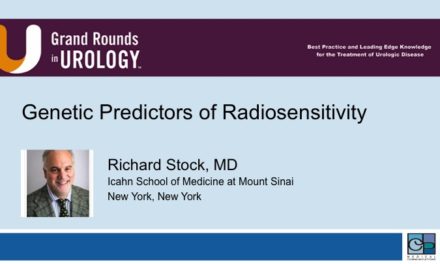
PCa Commentary | Volume 200 – April 2025
Posted by Edward Weber | April 2025
Focal Therapy of Prostate Cancer — An Emerging Technique for Initial Treatment of Localized Disease
With the increasing accuracy of imaging to define the volume and boundary of a solitary lesion, interest and research in focal ablation have increased. The outcomes of multiple techniques have been reported, including high-frequency ultrasound, cryoablation, brachytherapy, electroporation, laser ablation, and stereotactic body radiation therapy (SBRT). Focal therapy could be considered as occupying a mid-position between active surveillance and radical treatment, allaying anxiety about intervention delay in active surveillance.
Accurate localization of the cancer is essential for precise treatment. A commercially available program, “Unfold AI” (Avenda Health) is a significant advancement in localizing and defining cancer as imaged on an MRI. The UnFold website graphically displays a “color-guided 3D map, (based on an MRI-guided biopsy), showing how far the cancer has extended within the prostate” … allowing a “better determination about the treatment approach”. UnFold is significantly more informative than evaluation by MRI alone. Avenda claims that UnFold has a 97% sensitivity for detecting cancer within the prostate.
A second study compares an AI-based analysis vs. conventional MRI interpretation before prostatectomy (Priest, et all, Euro Urology Open Science, 2023). It claims that AI-defined tumor margins are 97% more accurate vs. 37% for conventional MRI interpretation. Increasing accuracy reduces the risk of in-gland recurrence.
Focal Therapy (FT): Overall Perspective — Success with FT is Dependent on Accurate Tumor Localization, Careful Patient Selection, and Informed Discussion.
A recent review of FT by Lasorsa et al. “Focal Therapy for Prostate Cancer: Recent Advances and Highlights” (Curr. Oncol. 2025) sets the stage for the role of FT in prostate cancer: “Focal therapy has emerged as a balanced middle ground aiming to reduce overtreatment and the risk of progression, as well as patients’ distress and anxiety.” In his conclusion, Lasorsa cites the importance of patient selection and counseling “due to the considerable risk of oncologic failure, which includes both in-field and out-of-field recurrences, requiring further therapeutic intervention.”
Brief Recap of Outcomes of Commonly Used Focal Therapy Techniques.
- Cryotherapy: This modality has been widely used for partial gland treatment for localized prostate cancer. An example is a report by Brisbane et al., UCLA (BJUint 2025), reporting the outcome of 204 men with localized intermediate and high-risk cancer whose tumor volumes and extent were estimated using AI UnFold software. Brisbane found that unifocal lesions of < 12.5 ccs in men with GG 2-3, < 20% pattern 4, age > 75, with a life expectancy of > 10 years were optimal. The procedure involves using two freeze-thaw cycles covering the lesion with wide margins, causing membrane rupture, ischemia, and vasculature damage, using urethral warming, while carefully monitoring the volume of frozen tissue. The incontinence rate was 6%; erectile function was preserved in 84% of men. The measure of success was finding GG 2 (Gleason Score 3+4) or less at subsequent MRI-guided biopsies at 6 and18 months follow up. “A successful primary outcome was observed in 77% of patients” at 6 months, and 60.1% at 18 months.
- High Frequency Focal Ultrasound (HIFU): This technique has also been widely used. A transrectal probe directs high-frequency ultrasound waves into the prostate without penetrating the rectal wall under transrectal MRI guidance. The ultrasound energy is converted into heat (> 65 degrees ℃) causing coagulative necrosis, the extent of which is monitored in real-time with transrectal US (or MRI). The target size is optimally 24 mm in width or less. Outcome: follow-up biopsies at 1 year found 24% of men with any cancer and 12.6% with clinically significant cancer. The 5-year failure-free survival was 88%. Erectile function was preserved in 58%-90 %; serious incontinence occurred in 0%-3.6 %. (Ibid, Lasorsa)
- Focal Laser Therapy: This technique involves prostate penetration by a needle (either transrectal or transperineal) carrying a laser fiber delivering heat. The treatment can be performed under local perineal anesthesia in the clinic or within the MRI gantry and employs MRI thermometric guidance. Outcome: In-field recurrence is reported at 20% and 7% beyond the treatment field. Freedom from significant cancer recurrence was 80-87.5%. Complications: urinary retention (5 – 27%), fistula (0-1.7%). (Ibid, Lasorsa)
- Low-Dose Focal Brachytherapy (permanent radioactive seed implantation) has a long history dating back to the pioneering work of Sylvester, Grimm, and Blasko, who reported (Int J Radiate Biol Phys. 2010) their 15-year I(131) whole gland prostate brachytherapy. Biochemical-free survival for low- and intermediate-risk men was 86% and 79%, respectively. “Cancer Specific Survival was 84% at 11.7 years follow-up.A large study of focal brachytherapy (Gutierrez-Valencia et al., Brit Journal Radiol, 2025) in 1492 men reported biochemical control of 97% at 24 months and 82% at 60 months. Seed brachytherapy is a “hands-on” procedure requiring a skilled and experienced physician to optimally implant and position the seeds.
- Stereotactic Body Radiation Therapy (SBRT) has become increasingly accepted as an effective technique for treating localized prostate cancer. Because of its high degree of accuracy and low rate of adverse effects, there is a tendency to treat the whole gland initially (as opposed to focally) with an internal boost directed at the most avid PET site. Nguyen et al., Frontiers Oncol reported their results of 5-fraction focal SBRT in 19 men: at 36 months follow-up, 96% were free of biochemical progression with no serious (> grade 3) toxicity.As opposed to the four prior manual techniques cited above, once the target of focal SBRT has been planned and entered into the computer, the radiation is performed robotically, resulting in its high degree of accuracy.
Summary of Focal Therapy Results:
The best outcome of focal therapy is seen in men with small (< 1.5 cm) unilateral lesions. FT, however, is associated in the manual techniques with ~10 – 20% recurrences requiring re-treatment. Low-rate brachytherapy has a better record with biochemical recurrence of 3% at 24 months and ~20% at 5 years. The modest rate of re-treatment is the trade-off for the opportunity to retain erectile function and avoid the more serious adverse effects of whole-gland therapy.
Treatment of In-field Recurrence After Initial Radiation Therapy:
Before the development of improved techniques for focal therapy, radical prostatectomy for localized in-field recurrence was considered the only recourse. The prostate (alone or combined with seminal vesicles) is the most common location of biochemical recurrence after primary radiation therapy with an 8-year cumulative incidence of 3.5% and 9.8% for low- and intermediate-risk disease, respectively (Zumsteg et al., J Urol. 2015). Currently, however, all of the above regimens are acceptable options for treating localized recurrence (as established by a negative PET scan), each with its associated adverse effects. Salvage SBRT has emerged as an effective and well-tolerated regimen for treating post-radiation recurrences, resulting in a recurrence-free survival of 40% to 76% at two years and is “potentially superior in some aspects to other salvage therapies.” (Bray et. al., Prostate. 2023.)
Bottom Line:
Focal radiation therapy is an emerging option for the treatment of localized prostate cancer. For selected men, it offers an opportunity to preserve the quality of life. In men with small, localized lesions, it could be considered a midway option between whole gland therapy and active surveillance, minimizing adverse effects and addressing anxiety regarding insufficient treatment with active surveillance.
Your comments and requests for information on a specific topic are welcome e-mail ecweber@nwlink.com.
Please also visit https://prostatecancerfree.org/prostate-cancer-news for a selection of past issues of the PCa Commentary covering a variety of topics.
“We appreciate the unfailing assistance of the librarians at Providence/Swedish.”
ABOUT THE AUTHOR
Edward Weber, MD, is a retired medical oncologist living in Seattle, Washington. He was born and raised in a suburb of Reading, Pennsylvania. After graduating from Princeton University in 1956 with a BA in History, Dr. Weber attended medical school at the University of Pennsylvania. His internship training took place at the University of Vermont in Burlington.
A tour of service as a Naval Flight Surgeon positioned him on Whidbey Island, Washington, and this introduction to the Pacific Northwest ultimately proved irresistible. Following naval service, he received postgraduate training in internal medicine in Philadelphia at the Pennsylvania Hospital and then pursued a fellowship in hematology and oncology at the University of Washington.
His career in medical oncology was at the Tumor Institute of the Swedish Hospital in Seattle where his practice focused largely on the treatment of patients experiencing lung, breast, colon, and genitourinary cancer and malignant lymphoma.
Toward the end of his career, he developed a particular concentration on the treatment of prostate cancer. Since retirement in 2002, he has authored the PCa Commentary, published by the Prostate Cancer Treatment Research Foundation, an analysis of new developments in the prostate cancer field with essays discussing and evaluating treatment management options in this disease. He is a regular speaker at various prostate cancer support groups around Seattle.




